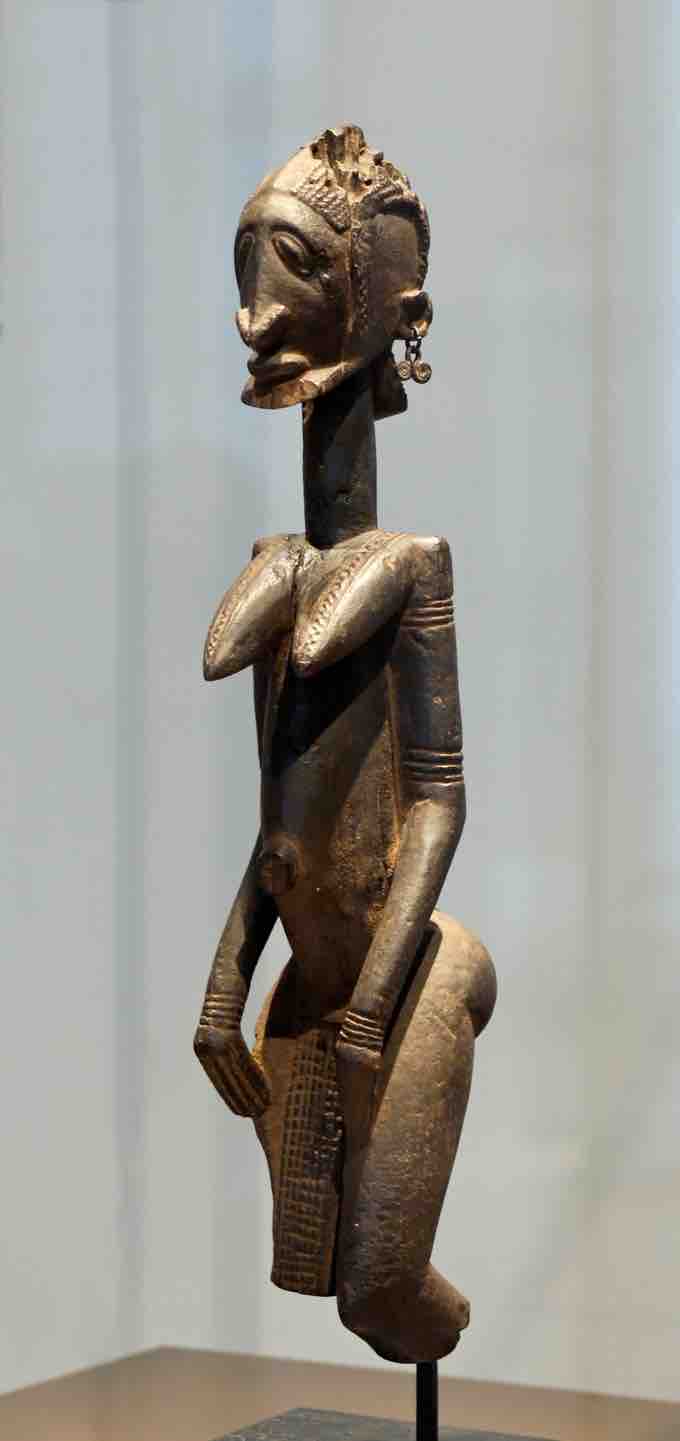Introduction: The Dogon People
The Dogon are an ethnic group living in the central plateau region of the country of Mali, in the West of the African continent. They migrated to the region around the 14th century CE. They are best known for their religious traditions, wooden sculpture, architecture, and funeral masquerades. The past century has seen significant changes in the social organization, material culture and beliefs of the Dogon, partly because Dogon country is one of Mali's major tourist attractions.
Dogon sculpture
Dogon art is primarily sculptural and revolves around religious values, ideals, and freedoms. Dogon sculptures are not made to be seen publicly and are commonly hidden from the public eye within the houses of families, sanctuaries, or the hogon (a spiritual leader of the Dogon people). The importance of secrecy is due to the symbolic meaning behind the pieces and the process by which they are made. Dogon sculptures are typically characterized by an elongation of form and a mix of geometric and figurative images.

Dogon Sculpture
Dogon sculptures are typically characterized by an elongation of form and a combination of geometric and figurative images.
Themes
Themes found throughout Dogon sculpture consist of figures with raised arms, superimposed bearded figures, horsemen, stools with caryatids, women with children, figures covering their faces, women grinding pearl millet, women bearing vessels on their heads, donkeys bearing cups, musicians, dogs, quadruped-shaped troughs or benches, figures bending from the waist, mirror-images, apron-wearing figures, and standing figures. Signs of other contacts and origins are evident in Dogon art; the Dogon people were not the first inhabitants of the area, and influence from the Tellem, or the people who inhabited the region in Mali between the 11th and 16th centuries CE, is evident in the use of rectilinear designs.
Dogon art is extremely versatile, although common stylistic characteristics – such as a tendency towards stylization – are apparent on the statues. Their art deals with Dogon myths, whose complex ensembles regulate the life of the individual. The sculptures are preserved in innumerable sites of worship and personal or family altars, and often render the human body in a simplified way, reducing it to its essentials. Many sculpture recreates the silhouettes of the Tellem culture, featuring raised arms and a thick patina, or surface layer, made of blood and millet beer. The Dogon style has evolved into a kind of cubism: ovoid head, squared shoulders, tapered extremities, pointed breasts, forearms and thighs on a parallel plane, and hair stylized by three or four incised lines.
Uses
Dogon sculptures serve as a physical medium in initiations and as an explanation of the world. They serve to transmit an understanding to the initiated, who will decipher the statue according to the level of their knowledge. Carved animal figures, such as dogs and ostriches, are placed on village foundation altars to commemorate sacrificed animals, while granary doors, stools, and house posts are also adorned with figures and symbols. Kneeling statues of protective spirits are placed at the head of the dead to absorb their spiritual strength and to be their intermediaries with the world of the dead, into which they accompany the deceased before once again being placed on the shrines of the ancestors.